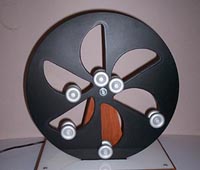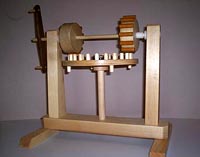
Ancient and Mediavel Siege Engines
The Design & Engineering Medieval Catapults was developed for classroom use. It's an excellent project for grade level 6 and up. The catapult can be incorporated into science and history classes. Our catapult is an easy to build, functioning model that required only carpenters wood glue to assemble.

Water Raising Machines of the Past
Comparing evidence from the surviving remains with known examples of ancient engineering - and supporting these theories with modern engineering principles – these experts were able to reconstruct a unique machine, which in its original form would have been capable of raising water.

Engineering for Children. Rolling Ball Machines
What is a rolling ball device? A rolling ball device may be defined as a mechanism or group of mechanisms, for the sake of art or utility, which uses the action of a ball or balls moving in either a constrained or unconstrained path to actuate the various effects of the mechanism(s). Rolling ball machines can be serious or playful, artistic or scientific, the product of engineering or the result of tinkering. No sooner does one list a taxonomy of all rolling ball devices when someone comes up with a new type.

Architecture and Construction Machines of Middle Age
Did you think everything in the Middle Ages was done painstakingly by hands? Think again! How did those huge blocks of stone get to the top of the cathedral? Machine Power! These were not gas or electric powered engines, but rather construction machines were powered by water, by air, by animals, or even by Men running in their own wheels!




